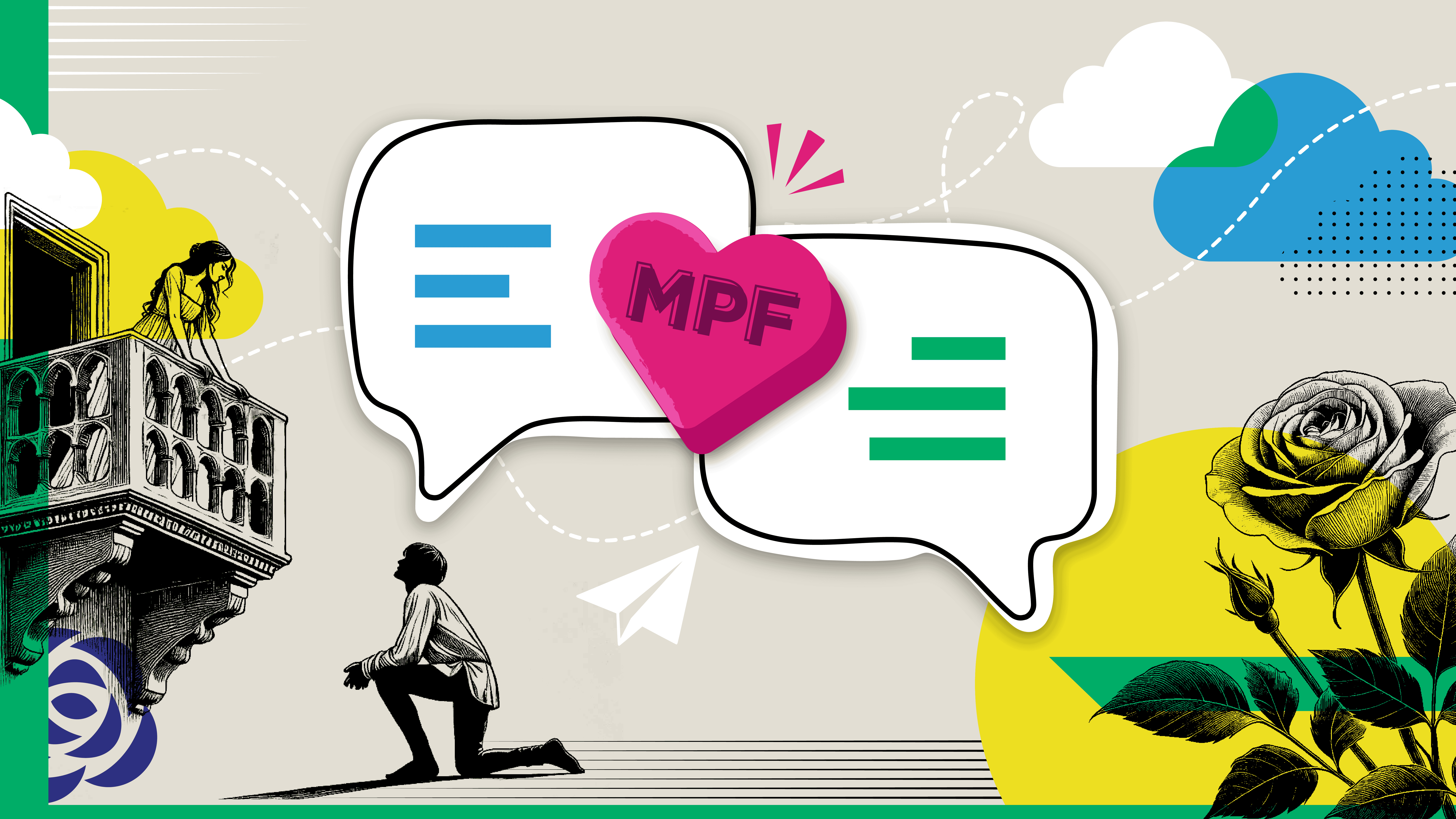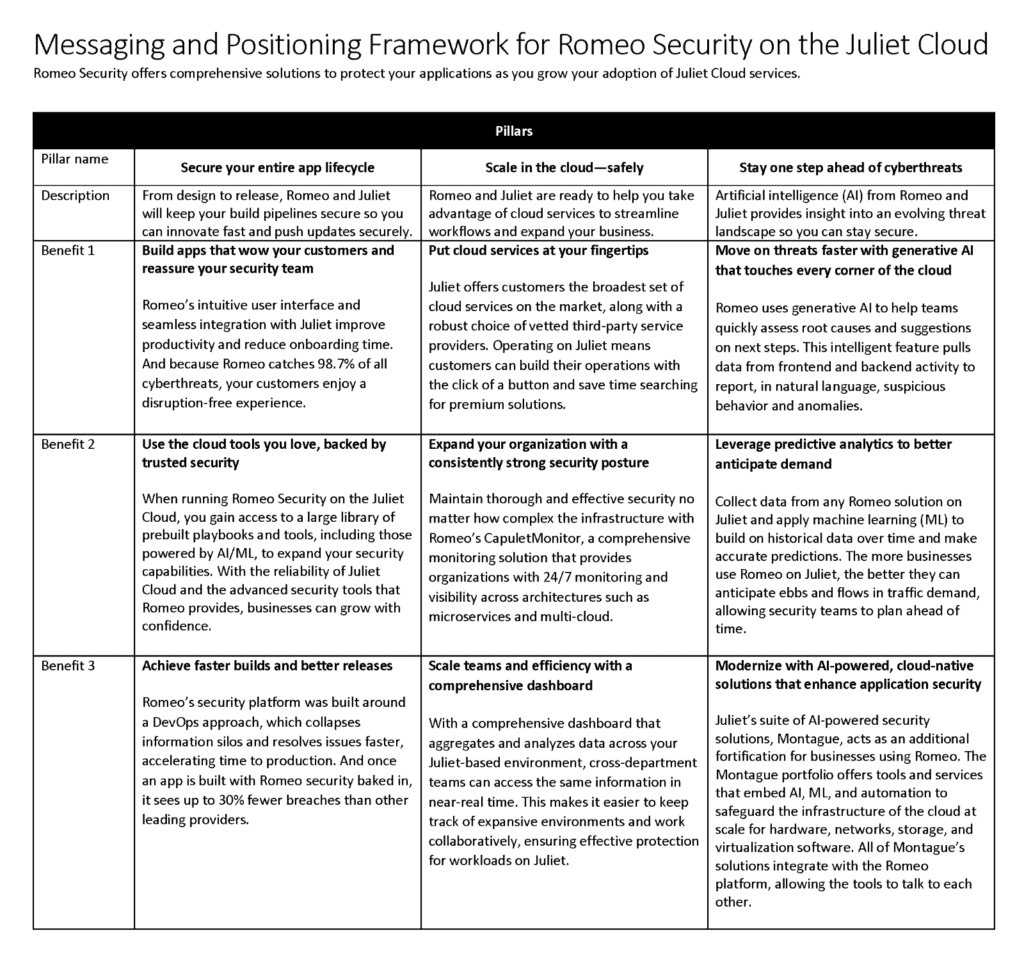
Image by Jenni Lydell
So you’re in a new [business] relationship and you want to shout it from the rooftops. Congrats! That honeymoon phase always feels good. Now, before you jump to the nearest balcony to reenact Romeo and Juliet, let’s think through the perfect sonnet you should deliver. You’ll need something that captures the better-together essence of your new partnership and makes your joint customers swoon.
As a B2B marketing agency, we recommend starting with a messaging and positioning framework (MPF) to get the main points just right. An MPF is a perfect way to strip down your story to reveal the top-line benefits customers will experience from your dynamic duo. Then we transform those benefits into pure poetry that would make Neruda proud. The end result is a document that includes key talking points and copy blocks you can pop into any joint marketing content. See for yourself:

Doing an MPF as the basis for your content strategy makes sure everyone—on both sides of the partnership—agrees on your differentiators and describes the value uniformly. This way, customers hear a persuasive, consistent message from all angles.
Pop quiz time
Now that you’re sold on MPFs, take our partnership quiz! You’ll find out which kind of better-together story is best for you and yours. Many of the joint MPFs we create are for ISV partners who want to describe the value of their alliance with a major cloud provider. There are a few ways to do this, and the pillar structure varies a bit, based on how different solutions support one another.
Bonus—there’s no wrong answer 😊
Which one best describes you and your partner?
A) Feeling one sided but enjoying the attention: This framework adapts the partner’s existing messaging by popping in the cloud provider where it makes sense. Think of this one as light on the cloud, heavy on the partner. It slots in cloud benefits where they make sense, giving customers a glimpse into the value of the combined partnership. It’s a good approach if the relationship is a little fraught or tricky to talk about.
B) Dating but not ready to move in together: This includes one pillar for the partner, one for the cloud provider, and one for both. This structure plays it safe by giving each side a chance to share existing messaging. The combined pillar explains their joint value and elaborates where possible. If the partnership were new, this approach would be a good fit.
C) Thinking of proposing tomorrow: This uses a structure where each pillar explains the partnership through a major customer benefit. This approach works well when there are a lot of juicy details about how the partner and cloud provider work together. They’ve likely co-developed integrations or POCs and have a roadmap for future work. They generally already have joint customers and it’s easier to pin down the differentiators of their partnership.
The results are in!
If you chose A, B, or C, you’re in luck! Our storytellers and consultants would love to learn more about your partnership and spin up an MPF for you. Reach out to learn more. Happy partnering!

